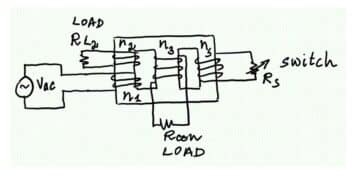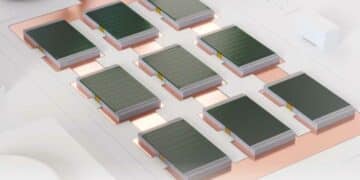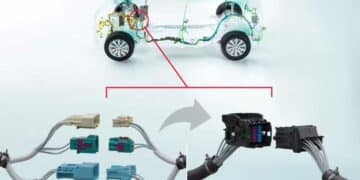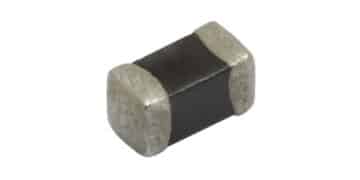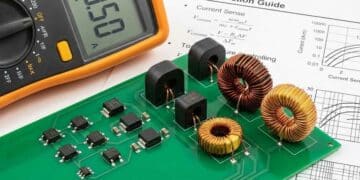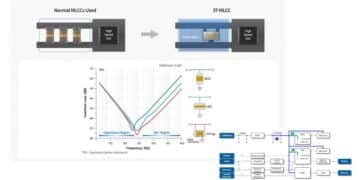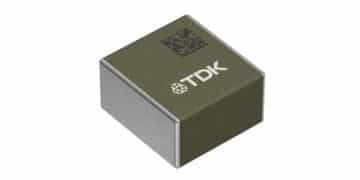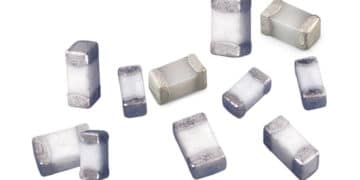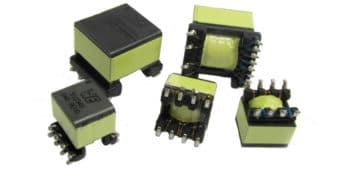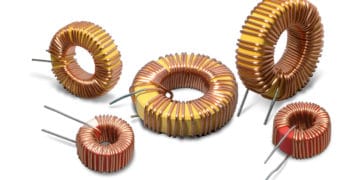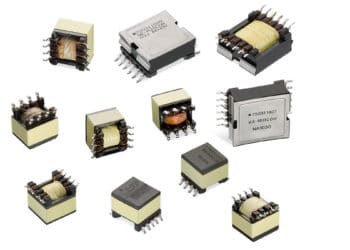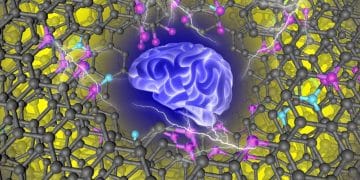
Guided by machine learning, researchers at the Department of Energy’s Oak Ridge National Laboratory designed a record-setting carbonaceous supercapacitor material that stores four times more energy than the best commercial material. A supercapacitor made with the new material could store more energy — improving regenerative brakes, power electronics and auxiliary power supplies.
“By combining a data-driven method and our research experience, we created a carbon material with enhanced physicochemical and electrochemical properties that pushed the boundary of energy storage for carbon supercapacitors to the next level,” said chemist Tao Wang of ORNL and the University of Tennessee, Knoxville.
Wang led the study, published in Nature Communications, with chemist Sheng Dai of ORNL and UTK.
Abstract
Porous carbons are the active materials of choice for supercapacitor applications because of their power capability, long-term cycle stability, and wide operating temperatures. However, the development of carbon active materials with improved physicochemical and electrochemical properties is generally carried out via time-consuming and cost-ineffective experimental processes. In this regard, machine-learning technology provides a data-driven approach to examine previously reported research works to find the critical features for developing ideal carbon materials for supercapacitors. Here, we report the design of a machine-learning-derived activation strategy that uses sodium amide and cross-linked polymer precursors to synthesize highly porous carbons (i.e., with specific surface areas > 4000 m2/g). Tuning the pore size and oxygen content of the carbonaceous materials, we report a highly porous carbon-base electrode with 0.7 mg/cm2 of electrode mass loading that exhibits a high specific capacitance of 610 F/g in 1 M H2SO4. This result approaches the specific capacitance of a porous carbon electrode predicted by the machine learning approach. We also investigate the charge storage mechanism and electrolyte transport properties via step potential electrochemical spectroscopy and quasielastic neutron scattering measurements.
“This is the highest recorded storage capacitance for porous carbon,” said Dai, who conceived and designed the experiments with Wang. “This is a real milestone.”
The researchers conducted the study at the Fluid Interface Reactions, Structures and Transport Center, or FIRST, an ORNL-led DOE Energy Frontier Research Center that operated from 2009 to 2022. Its partners at three national labs and seven universities explored fluid-solid interface reactions having consequences for capacitive electrical energy storage. Capacitance is the ability to collect and store electrical charge.
When it comes to energy storage devices, batteries are the most familiar. They convert chemical energy to electrical energy and excel at storing energy. By contrast, capacitors store energy as an electric field, akin to static electricity. They cannot store as much energy as batteries in a given volume, but they can recharge repeatedly and do not lose the ability to hold a charge. Supercapacitors, such as those powering some electric buses, can store more charge than capacitors and charge and discharge more quickly than batteries.
Commercial supercapacitors have two electrodes — an anode and cathode — that are separated and immersed in an electrolyte. Double electrical layers reversibly separate charges at the interface between the electrolyte and the carbon. The materials of choice for making electrodes for supercapacitors are porous carbons. The pores provide a large surface area for storing the electrostatic charge.
The ORNL-led study used machine learning, a type of artificial intelligence that learns from data to optimize outcomes, to guide the discovery of the superlative material. Runtong Pan, Musen Zhou and Jianzhong Wu from the University of California, Riverside, a FIRST partner university, built an artificial neural network model and trained it to set a clear goal: develop a “dream material” for energy delivery.
The model predicted that the highest capacitance for a carbon electrode would be 570 farads per gram if the carbon were co-doped with oxygen and nitrogen.
Wang and Dai designed an extremely porous doped carbon that would provide huge surface areas for interfacial electrochemical reactions. Then Wang synthesized the novel material, an oxygen-rich carbon framework for storing and transporting charge.
The carbon was activated to generate more pores and add functional chemical groups at sites for oxidation or reduction reactions. Industry uses activation agents such as potassium hydroxide that require a very high temperature, around 800 degrees Celsius, which drives oxygen from the material. Five years ago, Dai developed a process using sodium amide as the activation agent. It works at a lower temperature, near 600 degrees Celsius, and creates more active sites than the hotter industrial process. “Material synthesis in this ‘Goldilocks zone’ — not too cold, not too hot — made a real difference in not decomposing the functional groups,” Dai said.
The synthesized material had a capacitance of 611 farads per gram — four times higher than a typical commercial material. Pseudocapacitance is storage of charge based on continuous, fast and reversible oxidation-reduction reactions at the surface of electrode materials. Pseudocapacitance from such reactions at the oxygen/nitrogen sites contributed to 25% of the overall capacitance. The material’s surface area was among the highest recorded for carbonaceous materials — more than 4,000 square meters per gram.
This success came quickly. The data-driven approach allowed Wang and Dai to achieve in three months what would have previously taken at least a year.
“We achieved the performance of carbon materials at the limit,” Wang said. “Without the goal that machine learning set, we would have kept optimizing materials through trial and error without knowing their limit.”
The key to success was achieving two kinds of pores — mesopores between 2 and 50 nanometers, or billionths of a meter, and micropores tinier than 2 nanometers. In experimental analyses, the chemists found that the combination of mesopore and micropores provided not only a high surface area for energy storage but also channels for electrolyte transport. Miaofang Chi and Zhennan Huang at the Center for Nanophase Materials Sciences, a DOE Office of Science user facility at ORNL, performed scanning transmission electron microscopy to characterize the mesopores, but the micropores were too small to see.
Microscopically, the material looks like a golf ball with deep dimples. The dimples represent mesopores, and the micropores exist in the material between the dimples.
“You are building a highway for ion transport,” Dai said. ”Supercapacitors are all about high-rate performance — fast charging, fast discharging. In this structure that Tao and I designed, you have a larger pore, which you can view as a superhighway. This is connected to smaller roads, or tinier pores.”
“The smaller pores provide a larger surface for storing charge, but the larger pores are like a highway that can speed up the charge/discharge rate performance,” Wang said. “A balanced amount of small and large pores can realize the best performance, as predicted by the artificial neural network model.”
To characterize the electrolyte’s transport in the carbon pores, Murillo Martins and Eugene Mamontov of the Spallation Neutron Source, a DOE Office of Science user facility at ORNL, performed quasielastic neutron scattering. “They tracked the speed on the highway,” Wang said. “This was the first time that neutron scattering was used to analyze diffusion of a sulfuric acid electrolyte in the confined spaces of carbon nanopores.” Neutron scattering revealed the electrolyte moved at different speeds: quickly in the mesopores and slowly in the micropores.
Wang quantified the capacitance contributions from pores of different sizes and oxidation-reduction reactions at their surfaces via modified step potential electrochemical spectroscopy, a technique that can be done in only a few places in the world. “We found that mesopores doped with oxygen and nitrogen contribute most to the overall capacitance,” Wang said.
The FIRST team performed other studies of the physicochemical properties. Jinlei Cui and Takeshi Kobayashi from Ames National Laboratory used nuclear magnetic resonance to analyze the structure of polymer precursors. Bishnu Thapaliya of ORNL and UTK conducted Raman analysis, revealing the carbon’s amorphous, or disordered, structure.
Zhenzhen Yang of UTK and ORNL and Juntian Fan of UTK participated in the surface area measurements.
This research has the potential to accelerate the development and optimization of carbon materials for supercapacitor applications. Although this breakthrough study used the best data at the time, scientists now have even more boundary data for training the machine learning model for the next study.
”Using more data, we can set a new target and push the boundaries of carbon supercapacitors even further,” Wang said. “The successful application of machine learning in materials design is a testament to the power of data-driven approaches in advancing technology.”
The title of the paper is “Machine-learning-assisted material discovery of oxygen-rich highly porous carbon active materials for aqueous supercapacitor.”
This work was supported as part of the FIRST Center, an Energy Frontier Research Center funded by the DOE Office of Science at ORNL.
Read the original post at Researchers Present New Record Energy Storage Carbon Material for Supercapacitors
